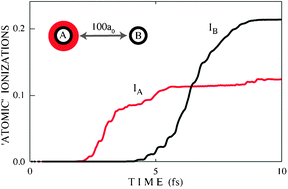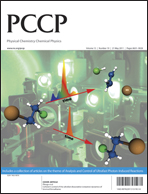Long-range energy transfer and ionization in extended quantum systems driven by ultrashort spatially shaped laser pulses
Abstract
The processes of ionization and energy transfer in a quantum system composed of two distant H atoms with an initial internuclear separation of 100 atomic units (5.29 nm) have been studied by the numerical solution of the time-dependent Schrödinger equation beyond the Born–Oppenheimer approximation. Thereby it has been assumed that only one of the two H atoms was excited by temporally and spatially shaped laser pulses at various laser carrier frequencies. The quantum dynamics of the extended H–H system, which was taken to be initially either in an unentangled or an entangled ground state, has been explored within a linear three-dimensional model, including the two z coordinates of the electrons and the internuclear distance R. An efficient energy transfer from the laser-excited H atom (atom A) to the other H atom (atom B) and the ionization of the latter have been found. It has been shown that the physical mechanisms of the energy transfer as well as of the ionization of atom B are the Coulomb attraction of the laser driven electron of atom A by the

- This article is part of the themed collection: Analysis and Control of Ultrafast Photon-Induced Reactions

 Please wait while we load your content...
Please wait while we load your content...